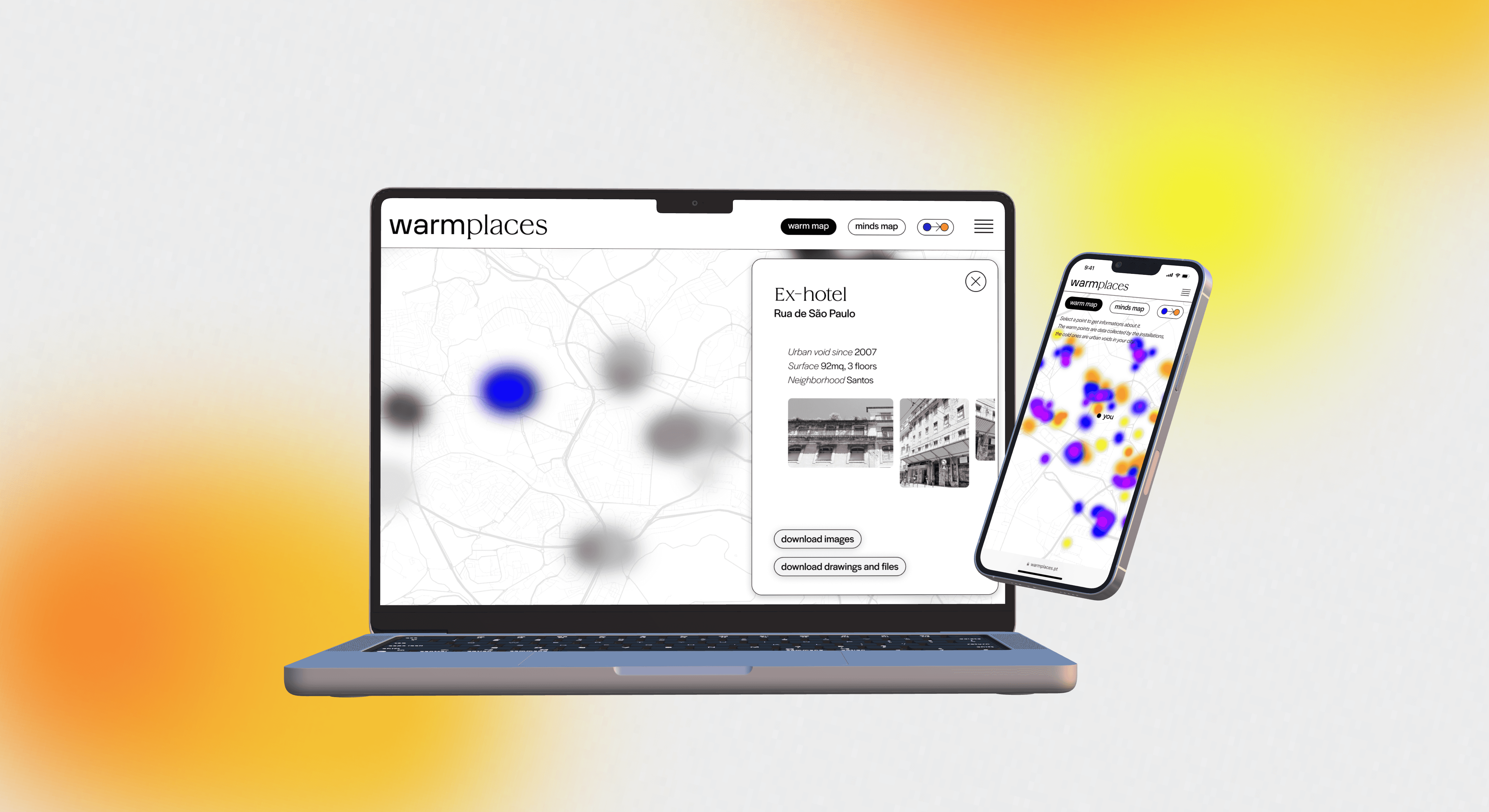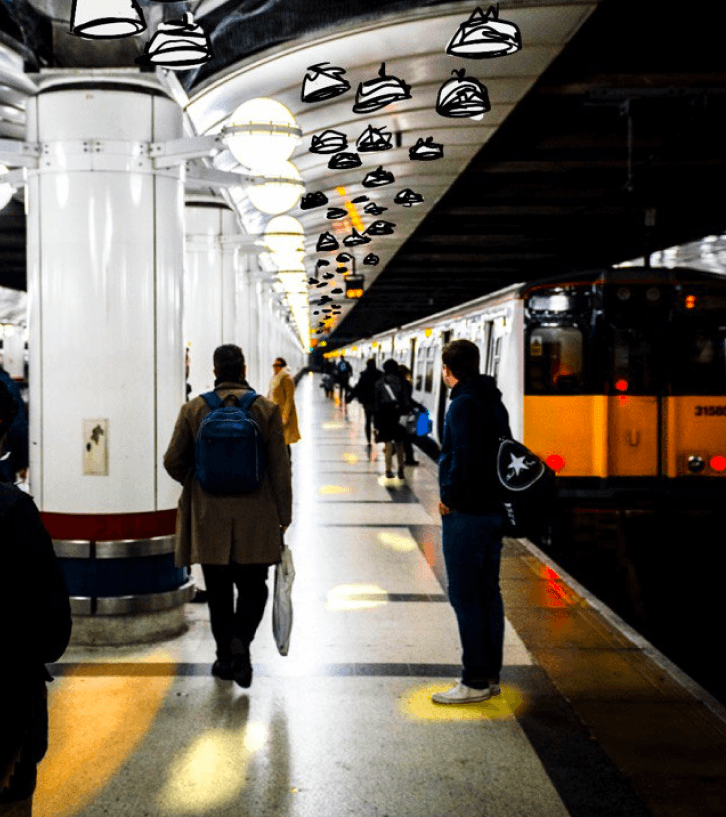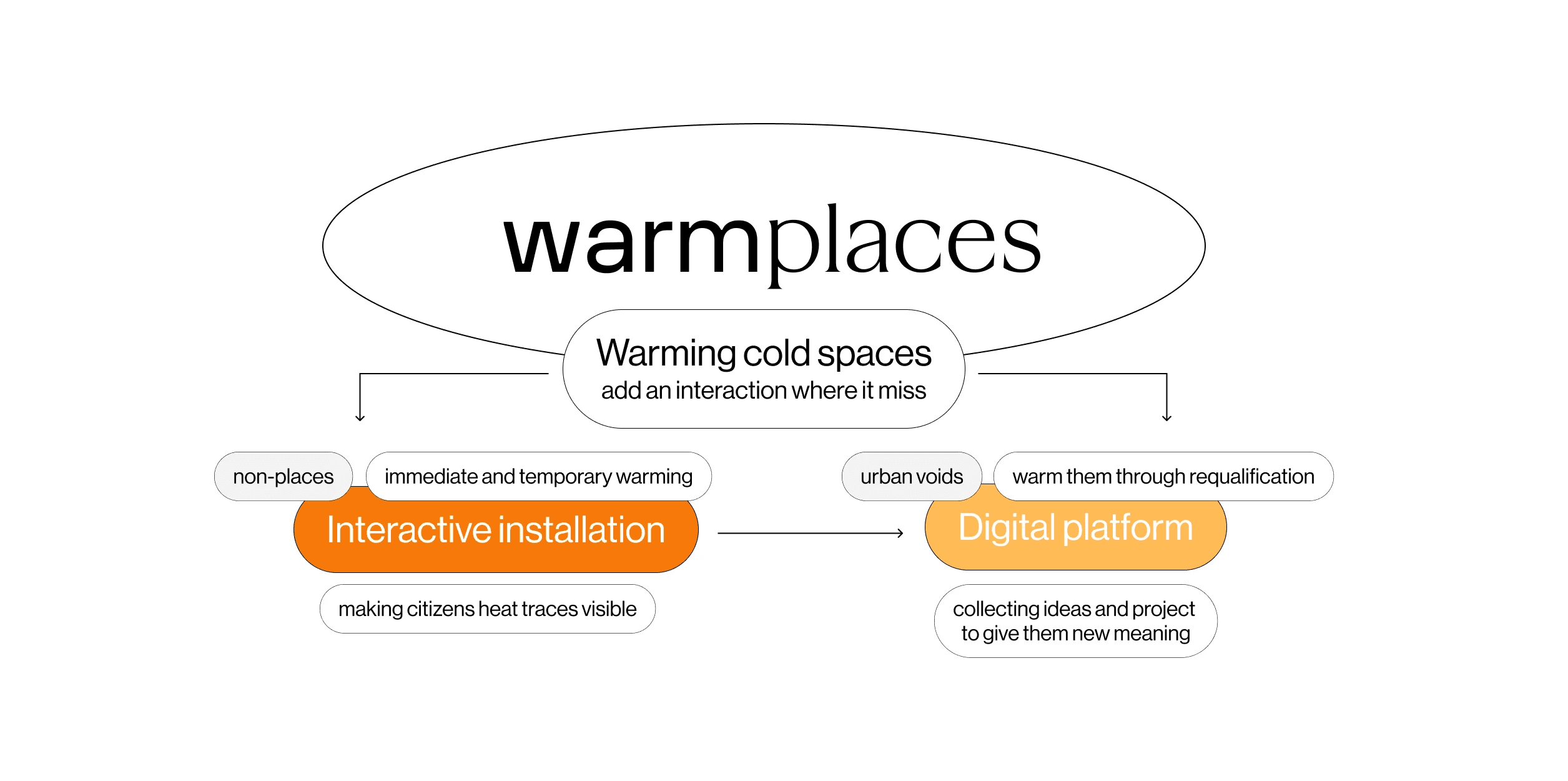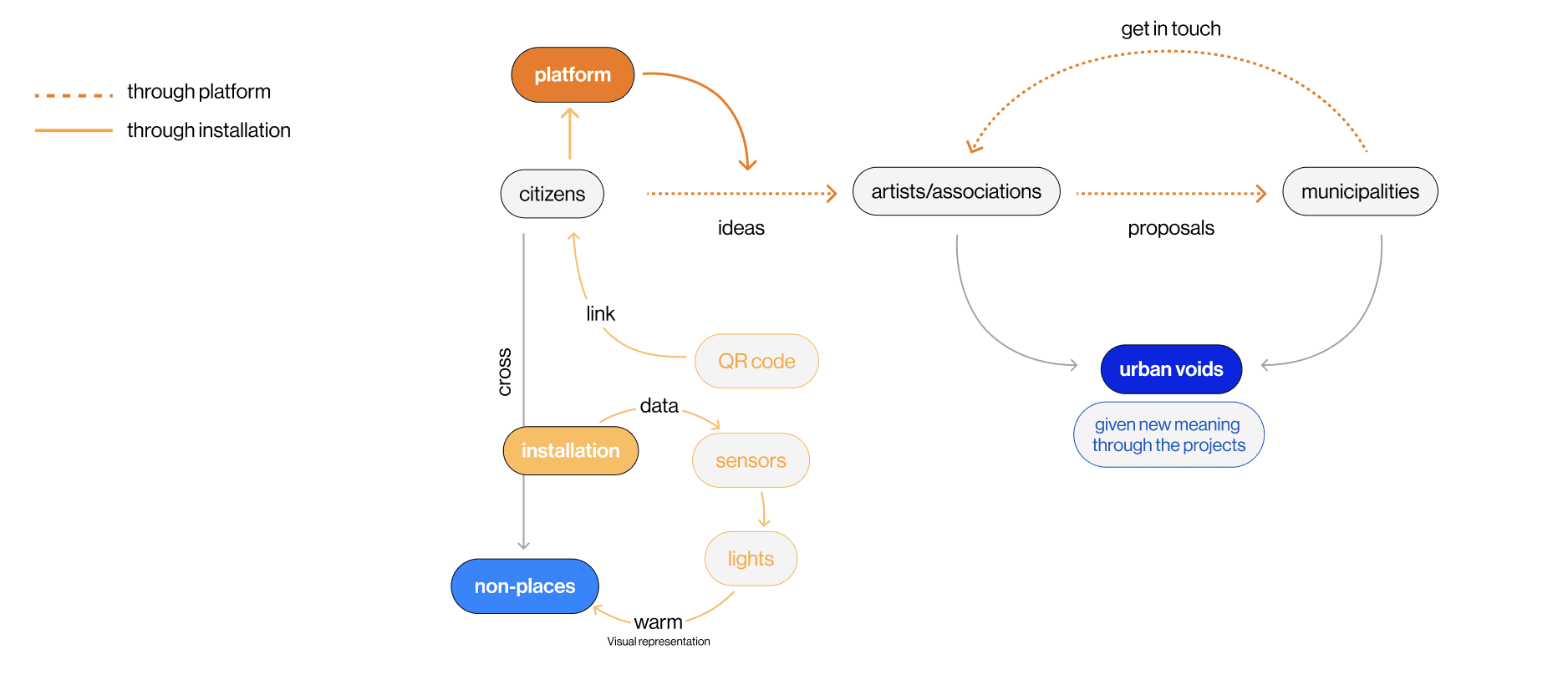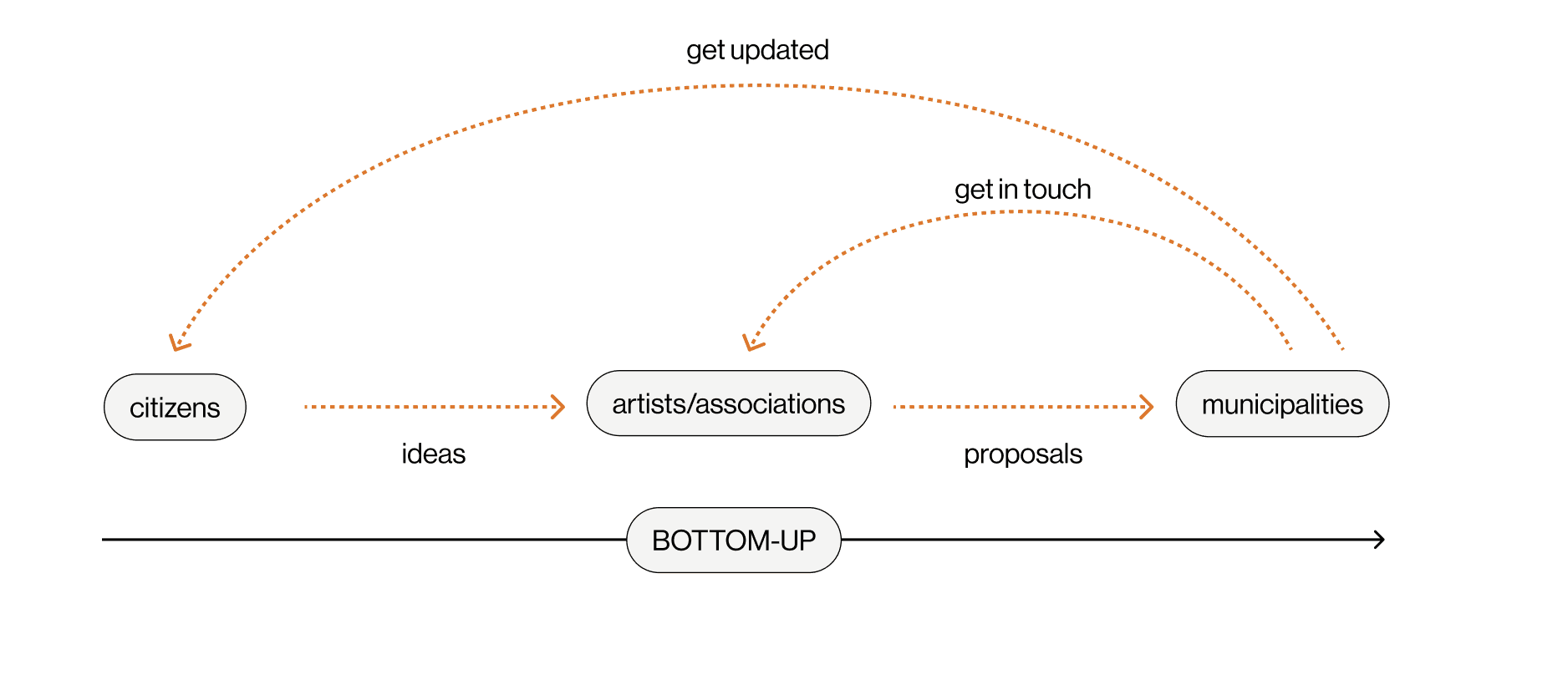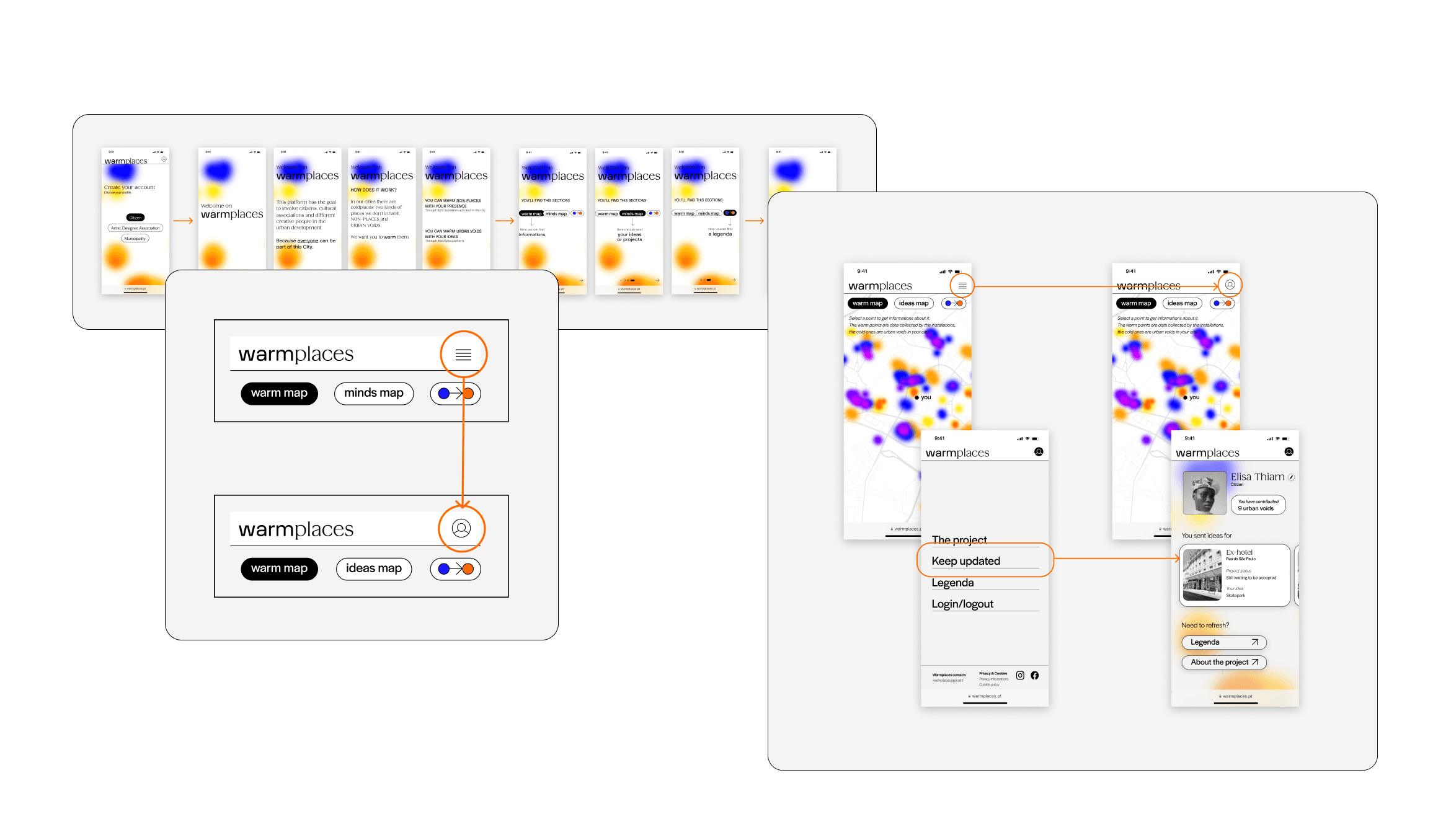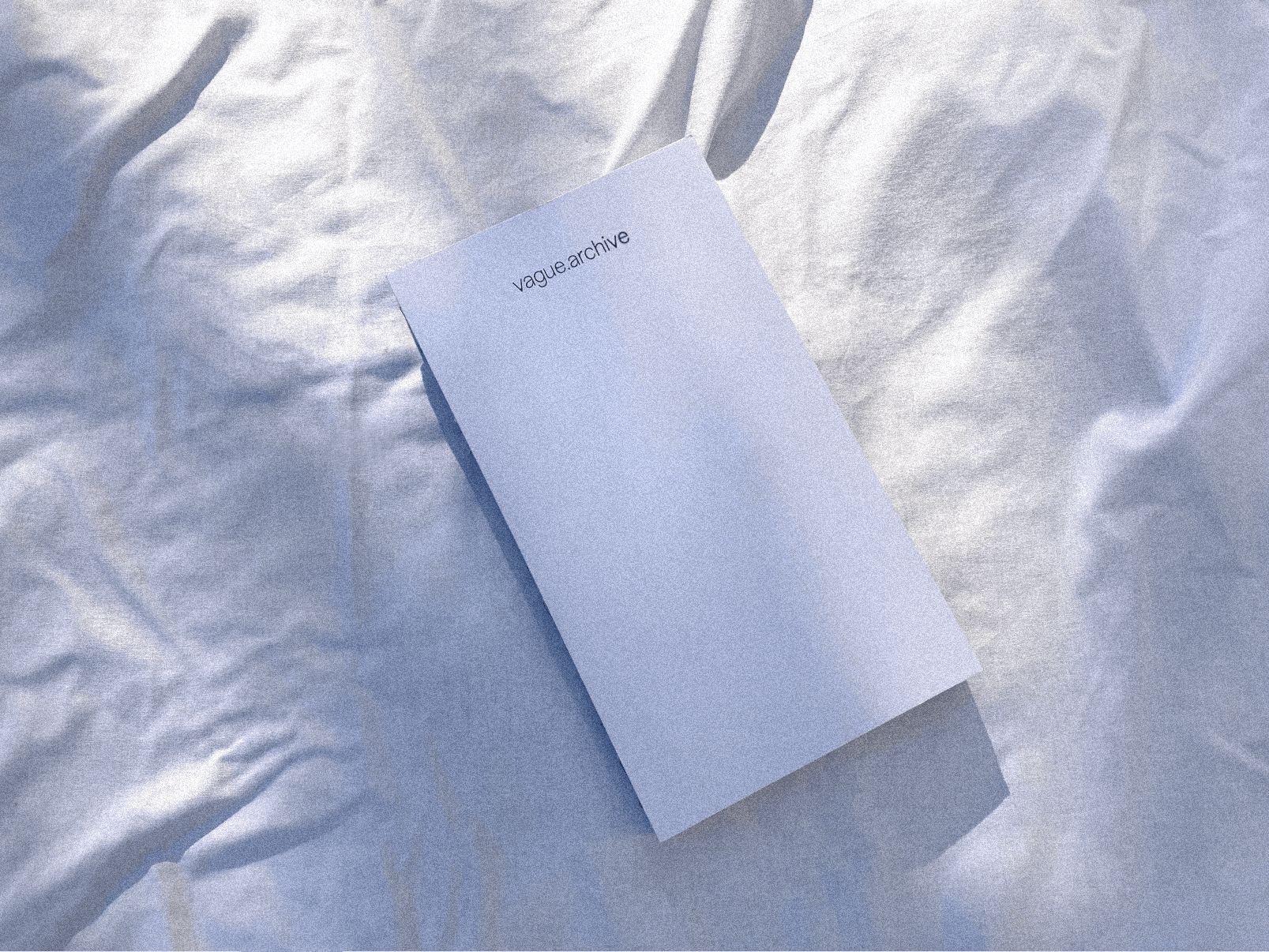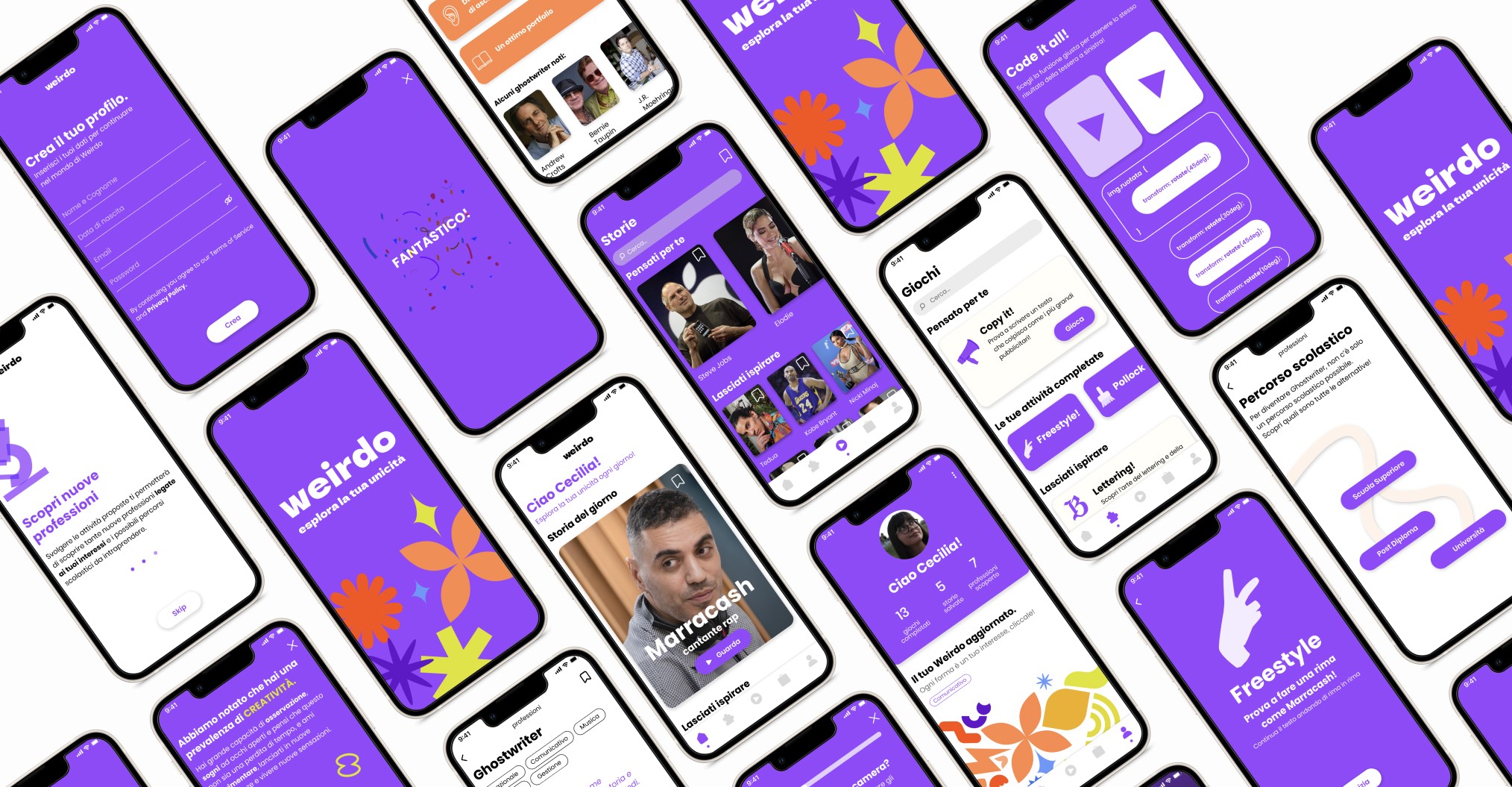[ cathegory ]
[ faculty ]
Marco Neves, Victor
Almeida, Sònia Rafael,
Francisco Rebelo,
Paulo Noriega
[ team ]
maria nardi
[ role ]
[ the callenge ]
[ how to warm cold places ]
[ the system ]
Once developed the system maps and interaction system structure, were designed different User Interfaces for the different kind of users: citizens, artists and designers, municipalities.
[ ux/ui design ]
The platform is mainly composed by a kind of thermic map which locate urban voids and differentiate them based on how much "human traffic" characterise them. In this way cold-places are immediately detectable with the cold colors; the metaphor of the thermic map is also useful to engage people making them aware of the urban sprawl situation in their city and involve them in the "warming" process of this kind of spaces.
[ iterative process]
Once developed different kind of prototypes, a user test protocol was structured with the aim of evaluating the UI effectiveness and its emotional effect. SUS questionnaire, Geneva Emotion Wheel and some test-specific questions were used to structure the protocol; with the results it was possible to follow an iterative design process to enhance UI and UX.
previous project
next project
